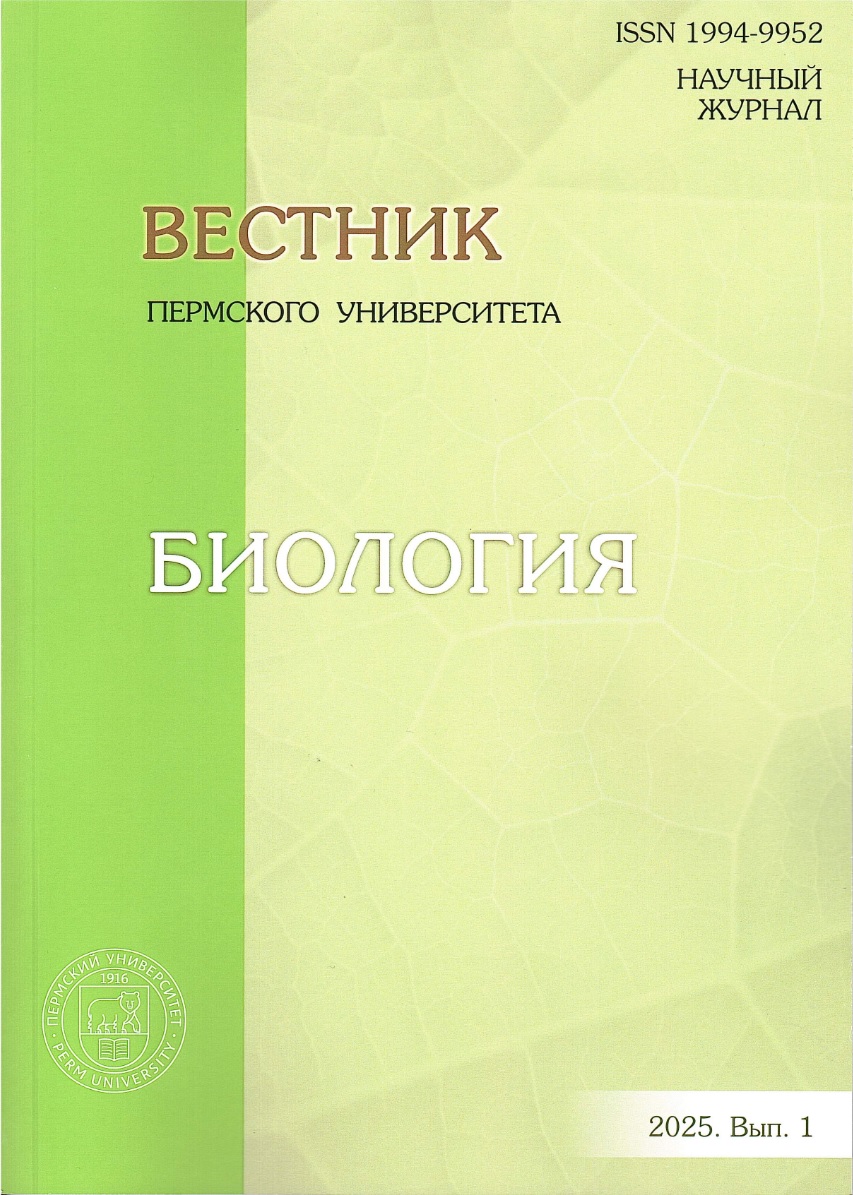The antimicrobial activity of ethanolic extracts derived from the fruits of wild and cultivated carrots against clinical isolates of Gram-positive and Gram-negative bacteria
Main Article Content
Abstract
Article Details
References
Виноградова К.А. и др. Устойчивость микроорганизмов к антибиотикам: резистома, её объём, раз-нообразие и развитие // Антибиотики и химиотерапия. 2013. Т. 58, № 5–6. С. 38–48. EDN: RARWVF
Землянко О.М., Рогоза Т.М., Журавлева Г.А. Механизмы множественной устойчивости бактерий к антибиотикам // Экологическая генетика. 2018. Т. 16, № 3. С. 4–17.
Определение чувствительности микроорганизмов к антимикробным препаратам: клинические ре-комендации. Смоленск, 2018. 206 с.
Орловская Т.В. Фармакогностическое исследование некоторых культивируемых растений с целью расширения их использования в фармации: дис. … д-ра фарм. наук. М., 2011. 421 с.
Савченко К.Ю. Антибиотикорезистентность: факторы, механизмы и способы борьбы с явлением // Молодой ученый. 2020. № 22(312). С. 431–433. URL: https://moluch.ru/archive/312/70995/ (дата обраще-ния: 16.10.2024).
Breitmaier E. Terpenes: flavors, fragrances, pharmaca, pheromones. Weinheim: Wiley-VCH, 2006. 214 p.
Cowan M.M. Plant products as antimicrobial agents // Clinical microbiology reviews. 1999. Vol. 12(4), Р. 564–582. DOI: 10.1128/CMR.12.4.564
European Committee on Antimicrobial Susceptibility Testing. Breakpoint tables for interpretation of MICs and zone diameters. Version. 2019. [05.06.2024]
European Committee on Antimicrobial Susceptibility Testing. Breakpoint tables for interpretation of MICs and zone diameters. Version. 2021. [05.06.2024]
Harvey A.L. Natural products in drug discovery // Drug discovery today, 2008. Vol. 13(19-20), Р. 894–901. DOI: 10.1016/j.drudis.2008.07.004
Hiltunen T., Virta M., Laine A.L. Antibiotic resistance in the wild: an eco-evolutionary perspective // Philos. Trans. R. Soc. Lond. B: Biol. Sci. 2017. Vol. 372(1712). Art. 20160039. DOI: 10.1098/rstb.2016.0039.
Jia Z., Tang M., Wu J. The pharmacology and mechanism of action of gallic acid: Its anticancer, anti-inflammatory, antioxidant, and other activities beneficial to humans // Food and Function. 2014. Vol. 5(4). Р. 609–617. DOI: 10.1039/c3fo60655k.
Karkman A. et al. Antibiotic-Resistance Genes in Waste Water // Trends in microbiology. 2018. Vol. 26(3). P. 220–228. DOI: 10.1016/j.tim.2017.09.005.
Martinez J.L. General principles of antibiotic resistance in bacteria // Drug Discovery Today: Technolo-gies. 2014. Iss. 11. P. 33–39. DOI: 10.1016/j.ddtec.2014.02.001.
Newman D.J., Cragg G.M. Natural products as sources of new drugs over the nearly four decades from 01/1981 to 09/2019 // Journal of natural products. 2020. Vol. 83(3). Р. 770–803. DOI: 10.1021/acs.jnatprod.9b01285. EDN: XFOIKF
Rokbeni N. et al. Variation of the chemical composition and antimicrobial activity of the essential oils of natural populations of Tunisian Daucus carota L. (Apiaceae) // Chem. Biodivers. 2013. Vol. 10(12). P. 2278–2290. DOI: 10.1002/cbdv.201300137. EDN: YECIKV
Wagner H., Ulrich-Merzenich G. Synergy research: approaching a new generation of phytopharmaceuti-cals // Phytomedicine, 2009. Vol. 16(2–3). Р. 97–110. DOI: 10.1016/j.phymed.2008.12.018.
Wang L., Hu C., Shao L. The antimicrobial activity of nanoparticles: present situation and prospects for the future // Int. J. Nanomedicine. 2017. Vol. 12. P. 1227–1249. DOI: 10.2147/IJN. S121956.
World Health Organization. (2017). Global priority list of antibiotic-resistant bacteria to guide research, discovery, and development of new antibiotics. World Health Organization. URL: https://www.who.int/news-room/fact-sheets/detail/antimicrobial-resistance (дата обращения: 16.10.2024).
World Health Organization. (2019). Устойчивость к противомикробным препаратам. URL: https://www.who.int/ru/news-room/fact-sheets/detail/antimicrobial-resistance (дата обращения: 16.10.2024).
World Health Organization. (2021). Antimicrobial resistance. URL: https://www.who.int/news-room/fact-sheets/detail/antimicrobial-resistance (дата обращения: 16.10.2024).
Yang K. et al. Synergistic antibacterial activity of gallic acid and cefotaxime against methicillin-resistant Staphylococcus aureus // The Korean Journal of Physiology & Pharmacology, 2010. Vol. 14(5). Р. 283–288. DOI: 10.4196/kjpp.2010.14.5.283.




